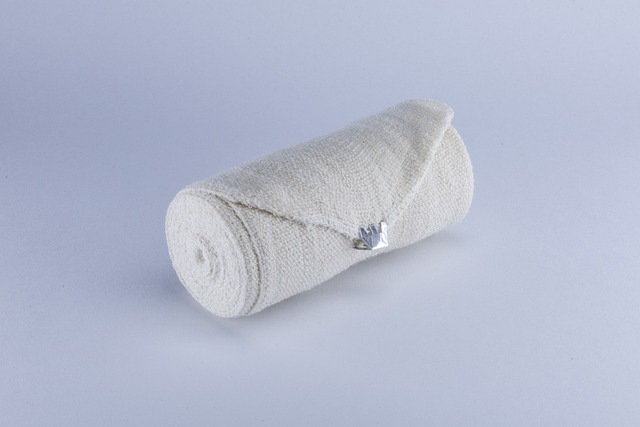Choosing the Right Gauze for Tooth Extraction: Your Comprehensive Guide
Welcome to your comprehensive guide on choosing the right gauze for tooth extraction! Whether you’re a dental professional or simply someone seeking valuable information, we understand that the process of extracting a tooth can be a daunting experience. But don’t worry, we’re here to put your mind at ease???? and provide you with ????all the essential knowledge you need to make an informed???? decision when it comes to selecting the perfect gauze for your tooth extraction needs. In this article, we’ll walk you through the different types of gauze available, discuss their features and benefits, and offer some helpful tips to ensure a smooth healing process. So, let’s dive in and empower you with the knowledge you need to choose the right gauze for tooth extraction!
1. Understanding the importance of gauze in tooth extraction:???? A comprehensive guide
Gauze is an essential tool used during tooth extraction procedures that cannot be understated. It serves several key purposes, each of which contributes???? to the success of the extraction and subsequent healing process. Understanding these benefits will help put your mind at ease when???? undergoing this common dental procedure.
First and foremost, gauze plays a crucial???? role in controlling bleeding after the extraction. Placing a ????piece of gauze over the extraction site and biting down on it gently helps apply pressure to the area, promoting???? blood clot formation, and preventing excessive bleeding. This step is crucial???? for minimizing the risk of complications and ensuring a smooth recovery process. Additionally, gauze prevents the accumulation???? of blood and saliva in your mouth during and after the procedure, allowing you to???? maintain a clear field of vision for your dentist or oral surgeon.
-
- Promotes clot formation: Applying pressure with gauze helps speed up the blood clotting process, reducing bleeding and the risk of further complications.
- Prevents blood ????accumulation: Gauze absorbs blood and saliva, ensuring a clean and clear operative field for your dental professional to ????work in.
- Aids in infection control: Placing gauze over the extraction site helps to keep it clean ????and prevents debris or bacteria???? from entering the wound.
- Provides comfort and reduces swelling: Gauze helps reduce swelling by providing gentle support to the surrounding tissues, easing the discomfort post-extraction.
????

2. Types of gauze for tooth extraction: Which one is best for you?
When it comes to tooth extraction, finding the right type of gauze for your post-operative care is???? crucial for a smooth recovery. Gauze helps control bleeding and allows a blood clot to form properly. However, with so many options???? available, it can be overwhelming to know which one to choose. We’ve outlined???? some popular types of gauze to help you make an informed decision:
-
- Non-Woven Gauze: This type of gauze is made from fibers pressed together rather than woven. It is highly absorbent and less likely to leave behind lint or fibers in your mouth.
- Gauze with Xylitol: Xylitol is a natural sweetener that not only helps reduce bacteria in the mouth, but can also promote wound healing. Gauze infused with xylitol can provide???? extra benefits during your recovery.
- Impregnated Gauze: Impregnated gauze???? is pre-soaked in an antimicrobial solution, such as chlorhexidine. This type of gauze helps prevent infection and promotes healing.
Remember, always consult with your dentist or oral surgeon to determine the ????best type of gauze for your specific needs. They will consider factors such as the extent of the extraction, your medical history, and any potential allergic reactions to certain materials. Proper aftercare, including the use of the appropriate gauze, can significantly contribute to a comfortable and successful tooth extraction recovery.

3. Factors to consider when selecting gauze for tooth extraction
When selecting gauze for tooth extraction, there are several important factors to keep in mind. Choosing the right gauze can greatly contribute to a successful and comfortable post-extraction healing process. Here are some key considerations:
- Absorbency: Look for gauze that has high absorbency to effectively???? control bleeding during and after the extraction. This will help minimize the risk of blood clots dislodging and promote faster healing.
- Softness: Opt for soft gauze to prevent any irritation or discomfort to the extraction site. The teeth and gums can be sensitive following a tooth extraction, so using gentle, non-abrasive gauze is crucial.
- Size: Choose an appropriate gauze size that fully covers the extraction site, ensuring it provides good ????coverage???? and is easy to handle. Too small of a gauze may not???? effectively absorb blood while an excessively large one may impede proper healing.
Moreover, consider the following factors???? as well:
-
- Non-stick properties: Gauze that sticks to the extraction area can cause unnecessary pain and disrupt the formation of a blood clot. Ensure???? the gauze has a non-stick surface to avoid any complications.
- Sterility: It’s essential to use sterile gauze to prevent the introduction of infection into the extraction site. Always check that the packaging indicates sterilization and avoid reusing gauze.
By considering these factors, you’ll be well-equipped to choose the most suitable gauze for your tooth extraction, promoting a smoother and more comfortable healing process.

4. The role of gauze in controlling bleeding after ????a tooth extraction
After a tooth extraction, controlling bleeding is crucial for proper healing. Gauze plays a pivotal role in this process, providing effective support and promoting clot formation. Here’s a closer look at why gauze is essential???? and how to use it???? correctly:
Why is gauze essential?
- Promotes clotting: By applying gentle pressure on the extraction site, gauze helps to form a blood clot, which is vital in the first stages of healing.
- Controls???? bleeding: Gauze is highly absorbent, quickly soaking up any blood that may seep ????from the extraction site.
- Prevents infection:???? Proper???? placement of gauze acts as a barrier, reducing the risk of bacteria entering the wound and causing infection.
How to use gauze:
- Sanitize hands and wear gloves: Before handling gauze, make sure your ????hands are clean and dry. Wearing gloves adds an???? extra layer of cleanliness.
- Make ????sure the extraction site is clean: Use a mouth rinse recommended by your dentist to cleanse the area gently.
- Fold a piece of gauze: Fold the gauze into a small, thick pad that can fit comfortably over ????the extraction site.
- Apply pressure: Place the folded gauze directly on the extraction site, applying pressure with your fingers or gently biting down to ensure the gauze remains in place.
- Replace gauze as needed: Depending on the amount of bleeding, gauze might need to be replaced every 20–30 minutes or as instructed by your dentist.
Remember, the gauze should be removed once the bleeding has ????adequately subsided. If bleeding continues???? profusely or becomes excessive, seek immediate medical attention. ????Always consult your oral healthcare professional for more specific instructions on???? gauze usage.

5. How to choose the right gauze ????size for your tooth extraction
If you’ve recently undergone a tooth extraction, it’s important to choose the right gauze size to aid in the healing process. Properly selecting the appropriate gauze size will???? help minimize bleeding and promote a faster recovery. Follow these helpful tips to ensure you choose the right gauze size for your tooth extraction:
Consider the following:
- The extent of your extraction: If you had a simple extraction, a smaller gauze???? pad may suffice. However, for more complex extractions or multiple extractions, a larger gauze pad might???? be necessary to cover and apply gentle pressure???? on the site.
- Your comfort level: Opt for gauze that fits comfortably in your mouth. While it should adequately cover the extraction site, it should not be too bulky or cause discomfort while talking or eating.
- Bleeding severity: Assess the amount of bleeding you are experiencing after the extraction. If bleeding is minimal, a ????smaller gauze pad can be used. For more substantial bleeding, a larger pad may be required to effectively control???? it.
Additional considerations:
-
- Gauze material: Look for ????non-stick gauze ????made from sterile materials to prevent it from adhering to the extraction site and causing further discomfort.
- Multiple sizes: It’s advisable to have a variety of gauze sizes on hand, as the healing ????process can involve different stages with varying ????levels of bleeding.
- Consult ????with your dentist: If you’re uncertain about which gauze size to use, reach out to your dentist. They will guide you in selecting the???? most appropriate option based on your specific needs.
Choosing the right gauze size for your tooth extraction ensures comfort and optimal healing. Remember to apply the gauze gently to the extraction site and follow your dentist’s post-extraction care instructions. ????Soon enough, you’ll be on ????your way to a healthier, pain-free mouth!
6. Sterile gauze vs. non-sterile gauze: ????Which one should you use?
When it comes ????to wound care, ????choosing ????the right type of gauze can ????make a big ????difference in the healing process. The two main options you’ll come across are sterile gauze and non-sterile gauze. Here’s a breakdown ????of???? the differences between the two and when you should opt for each:
Sterile Gauze:
- Sterile gauze is individually packaged and treated to be free from bacteria ????and ????other harmful microorganisms.
- This type of gauze is typically used for post-surgical wounds, deep cuts, and open wounds that have a higher risk of infection.
- Using sterile gauze ????reduces ????the chances of introducing germs to the???? wound, ????promoting a cleaner and faster healing process.
Non-Sterile Gauze:
- Non-sterile gauze is not individually wrapped or treated to be free from bacteria or contamination.
- This type of gauze is suitable for mild wounds, where the risk of???? infection???? is minimal.
- Non-sterile gauze can be used for???? everyday injuries like small abrasions, minor cuts, or for applying ointments and creams.
- Keep in mind that if using non-sterile gauze, it’s important to clean it properly with soap and water before applying it to a wound.
Ultimately, the decision between ????sterile and non-sterile gauze depends on the type and severity of the wound. It’s always ????a good idea to consult with a healthcare professional to determine the best option for your specific situation. Proper wound care???? is essential for a speedy recovery, so choose wisely!
7. Exploring alternative gauze options for tooth extraction: Are there any alternatives?
When it comes to tooth extraction, many people are familiar with the traditional use of gauze to???? control bleeding???? and promote ????healing. However, there are alternative options available that???? may be worth considering. These alternatives can offer additional benefits ????such as increased comfort, reduced healing time, and improved overall experience. Here are some alternative gauze options that you might???? find useful:
-
- Non-Woven Gauze: Unlike traditional woven gauze, non-woven gauze is made of fibers that are entangled together rather than woven. ????This makes it softer and less likely to stick to the extraction site, resulting in a more comfortable experience during removal.
- Gel Foam:???? This innovative option is a type of absorbable dental sponge that can be used for tooth extraction. It quickly expands when it comes into contact with blood, creating a barrier to minimize bleeding and aid in clotting. Gel foam is easy to apply and remove, and it also helps with???? reducing post-extraction discomfort.
- Collagen Dressings: These dressings are derived ????from natural sources like bovine or porcine collagen. They create a protective barrier that encourages tissue regeneration and minimizes bleeding. Collagen dressings are also known to have antimicrobial properties, reducing the risk of infection.
It’s important to note that each option has its own advantages, and it’s recommended to consult with your dentist or oral surgeon to determine which alternative gauze option is best suited for your specific needs. They will be able ????to provide you with expert advice based on the complexity of your ????extraction and???? your unique oral health situation. Don’t hesitate to ask questions and discuss any concerns you may have during your consultation!
8. Tips and tricks ????for applying gauze for optimal comfort and healing after tooth extraction
After a tooth extraction, using gauze ????correctly can greatly contribute to your comfort and promote faster???? healing.???? Here are some tips and tricks to ensure you???? get the most out of your gauze application:
-
- Change the gauze regularly: It is important to change the gauze pad ????regularly to maintain proper hygiene and prevent discomfort. Replace???? the gauze every 30 to 45 minutes or as instructed by your dentist or oral surgeon. This will help control bleeding and minimize the risk of infection.
- Apply gentle and constant pressure: When placing the gauze over the???? extraction site, apply gentle but firm pressure by gently biting down on it. This helps create a blood clot, which is vital for the healing process. Avoid excessive pressure ????as it can cause irritation and delay???? healing.
- Use moistened gauze: Moistening the gauze pad before placing it can enhance its effectiveness and prevent it from sticking to the wound.???? You can use sterile saline solution or clean water to moisten the???? gauze. Remember not to soak it, as excess moisture can hamper clot formation.
By following these ????tips and tricks, you can ensure optimal comfort and promote the healing process after a tooth extraction. Remember to always consult your dentist or oral surgeon for personalized advice ????and additional instructions specific to your situation.
9. How ????to properly clean and maintain gauze during your tooth extraction recovery
Cleaning and maintaining gauze during your tooth extraction recovery
During ????your tooth extraction recovery, it is crucial ????to properly clean and maintain the gauze that has been placed ????at the extraction site.???? This will help promote ????healing and prevent any infections. Here are some simple steps to follow:
1. Wash your hands: Before handling the gauze, make sure to thoroughly ????wash your hands with soap and warm water. This will help minimize the risk of introducing any bacteria to the extraction site.
2. Gently remove the used gauze: Take a clean piece of gauze and slowly and gently remove the???? used gauze from the extraction site. Avoid pulling or ????tugging too hard as this may cause additional pain or disrupt the blood ????clot that has formed.
3. Cleanse the extraction area: Use a saltwater solution to gently cleanse the extraction area. Mix 1/2 teaspoon of salt with 8 ounces of warm water. Rinse your mouth with this solution for about 30 seconds, ensuring it reaches the extraction site.
4. Pat dry and reapply fresh gauze: Once the area has been cleansed, gently pat it dry using a clean, soft cloth or a gauze pad. Be careful not to disturb the blood clot. Then, fold a fresh piece of gauze and place ????it over the extraction site. Bite down gently to hold it in place.
Remember, maintaining proper oral hygiene???? and following these steps will aid in a smooth recovery process. If you have any concerns or experience excessive bleeding or pain, contact your dentist immediately. Take care of yourself and happy healing!
10. Key considerations for gauze???? selection: Advice from dental professionals
When it???? comes to selecting the right gauze for dental procedures, it’s important to keep a few key considerations in mind. We asked dental professionals for their advice and here’s what ????they had to say:
1. Absorbency: Look for gauze that has high absorbency to effectively manage any bleeding during dental procedures. A highly absorbent gauze will help maintain a clean and dry environment, facilitating proper healing.
2. Sterility: Ensuring the gauze is sterile is crucial to prevent infections and promote hygiene in the dental office. Always choose???? gauze that comes in individually wrapped packages to maintain its sterility until use. Disposable sterile gauze is???? the way to go!
3. Size and thickness: Consider the size and thickness of the gauze ????you???? need for the ????specific procedure. Thicker gauze provides more cushioning, useful for protecting delicate tissues, while a smaller size may???? be optimal for hard-to-reach areas.
4. Non-linting: Opt for gauze that is non-linting to avoid fibers from shedding and getting trapped in the patient’s mouth. Non-linting gauze maintains a clean environment and reduces???? the risk of complications.
5. Texture: The texture of the gauze can affect its effectiveness ????in ????different scenarios. For tightly packed bleeding, ????gauze with a knitted texture may be more efficient, whereas a smooth texture can be useful when wiping or applying medication.
Frequently Asked ????Questions
Q: What is the purpose of this article?
A: The purpose of this article is to ????provide a comprehensive guide on choosing the right gauze for tooth extraction.
Q: Why is choosing the right gauze important for tooth extraction?
A: Choosing the right gauze is crucial for tooth extraction as it helps control bleeding, promotes the healing process, and keeps the extraction site clean and protected.
Q: What are the different types of gauze available for tooth extraction?
A: There are two main types of gauze used for tooth extraction: non-impregnated gauze and impregnated gauze. Non-impregnated gauze is a simple woven material, while impregnated gauze contains added materials like???? hemostatic agents or antimicrobial substances.
Q: When should ????I use non-impregnated gauze?
A: Non-impregnated gauze is ????typically used for standard tooth extractions with minimal bleeding. It provides???? a gentle and soft layer to???? maintain pressure on the extraction site, encouraging clot formation.
Q: How about impregnated gauze?
A: Impregnated gauze is recommended when the extraction involves more intensive bleeding. The added substances in impregnated gauze help control bleeding and provide antibacterial protection, reducing the risk of infection.
Q: ????Can you provide examples of impregnated???? gauze for tooth extraction?
A: Sure! Some common examples ????of impregnated gauze include gauze soaked in Tranexamic acid, which helps reduce bleeding, or gauze containing ????chlorhexidine, an antimicrobial agent. Your dentist or oral surgeon can recommend the most suitable option for your specific case.
Q: How do I properly use gauze for tooth extraction?
A: Start by folding the ????gauze into a small, comfortable pad, then bite down???? gently but firmly on the extraction site. Apply constant pressure for around???? 30 minutes to promote clot formation. Replace the???? gauze with ????a new pad if it becomes saturated.
Q: Are there any precautions to keep in mind when using gauze for ????tooth extraction?
A: Yes, it’s essential not to???? rinse your mouth forcefully or disturb the extraction site by touching it with your tongue or fingers. Avoid drinking through a straw, as this can dislodge blood clots and cause bleeding to resume. Follow any specific instructions given by your dentist or oral surgeon.
Q: How long ????should I use gauze after tooth extraction?
A: It is typically recommended to use gauze for the first few hours ????following a tooth extraction. However, always consult your dentist for specific instructions based on your situation.
Q: Can I use any type of gauze for tooth extraction?
A: It’s generally best to consult your dentist or oral surgeon???? to determine the most appropriate type of gauze for your specific tooth extraction. They can provide personalized recommendations based on your needs.
Q: Is there anything else I should know about choosing the right gauze for tooth extraction?
A: Yes, please remember that gauze is just one aspect of post-extraction care. Proper oral hygiene, including gentle brushing and rinsing with saltwater, is crucial to aid in the healing process. It’s also important to reach out to your dentist if you experience excessive bleeding, severe pain, or any concerns following a tooth extraction.
Conclusion
In conclusion, ????we hope that this comprehensive guide has equipped you with the knowledge and confidence to choose the ????right gauze for???? your tooth extraction???? needs. From understanding the different types of gauze available, to considering the absorbency and size, and even learning how to properly apply it, we’ve covered it all.
Remember, selecting the right gauze is crucial for a speedy and comfortable recovery. By opting for the appropriate material that suits your bleeding level and personal ????preferences, you can ensure a successful extraction ????experience.
Don’t be overwhelmed by the choices out there; just keep in mind the essential features we’ve highlighted. Whether you decide on non-woven gauze for its softness or favor the absorbency ????of woven cotton, trust your instincts and listen to your dentist’s recommendations.
Lastly, always follow the
We genuinely hope this guide has been helpful in navigating the world???? of gauze selection for tooth extraction. Armed with this newfound knowledge, you can confidently embark on your journey to a speedy and comfortable recovery. Here’s to a healthy smile and pain-free days ahead!






